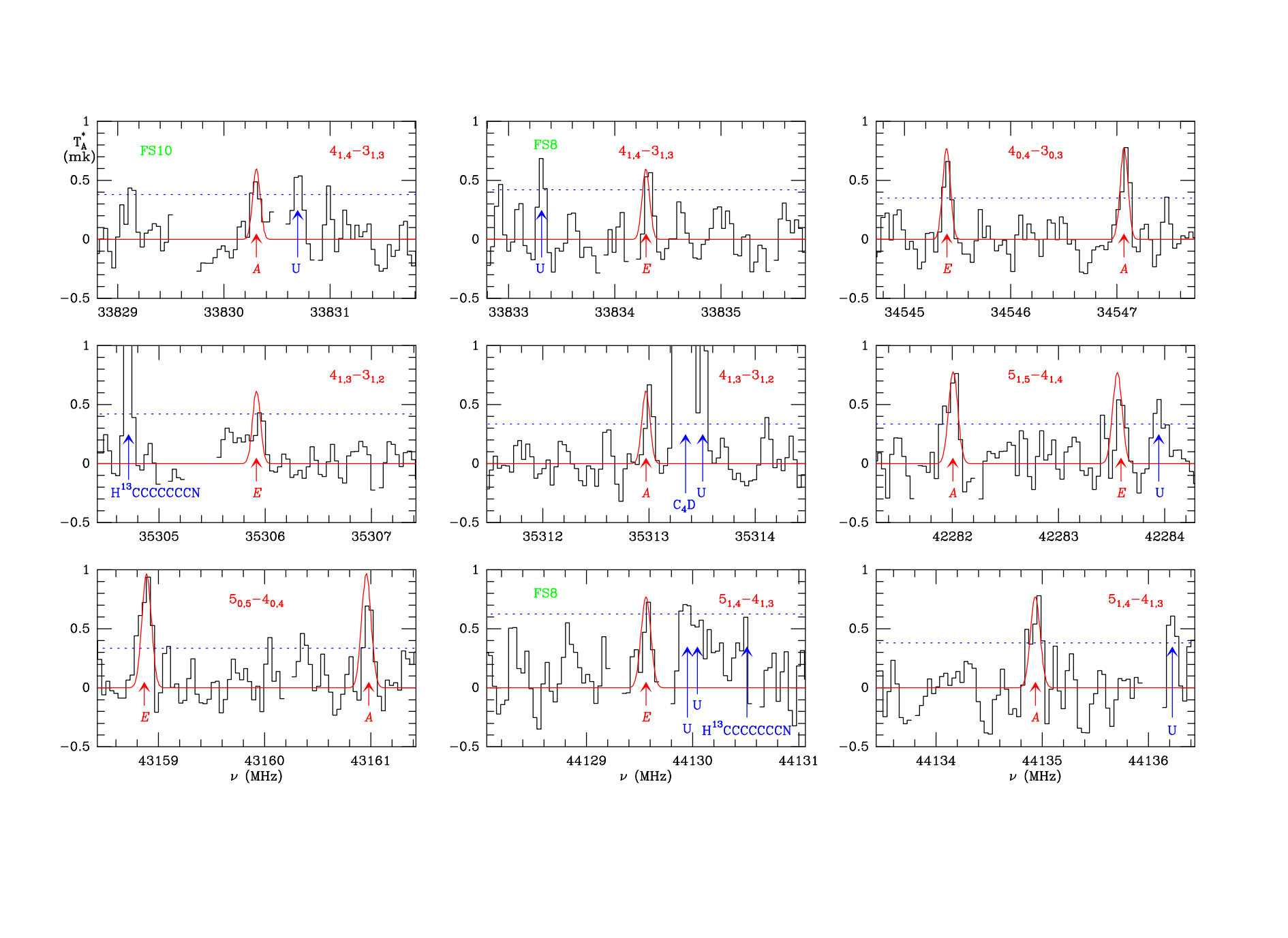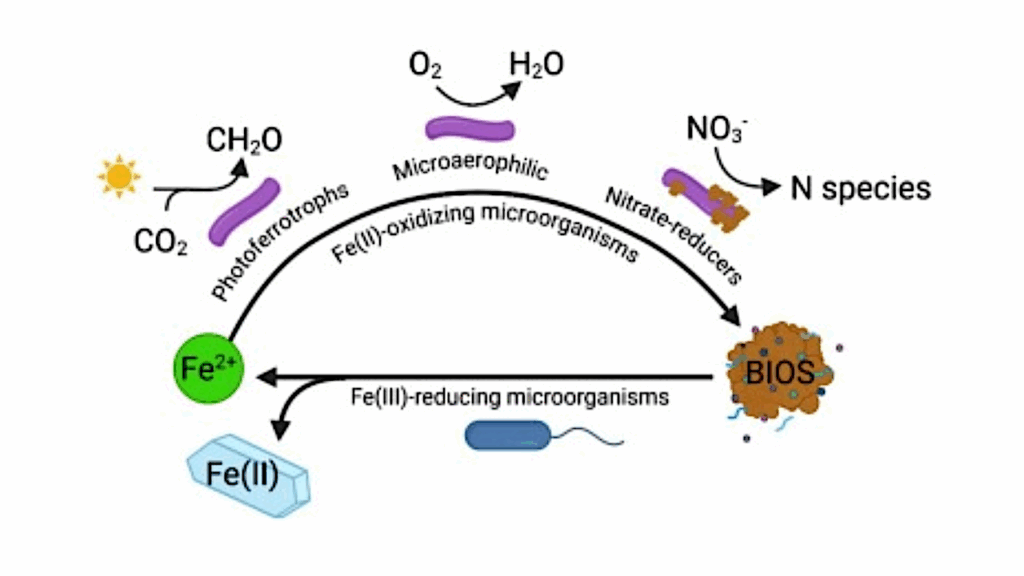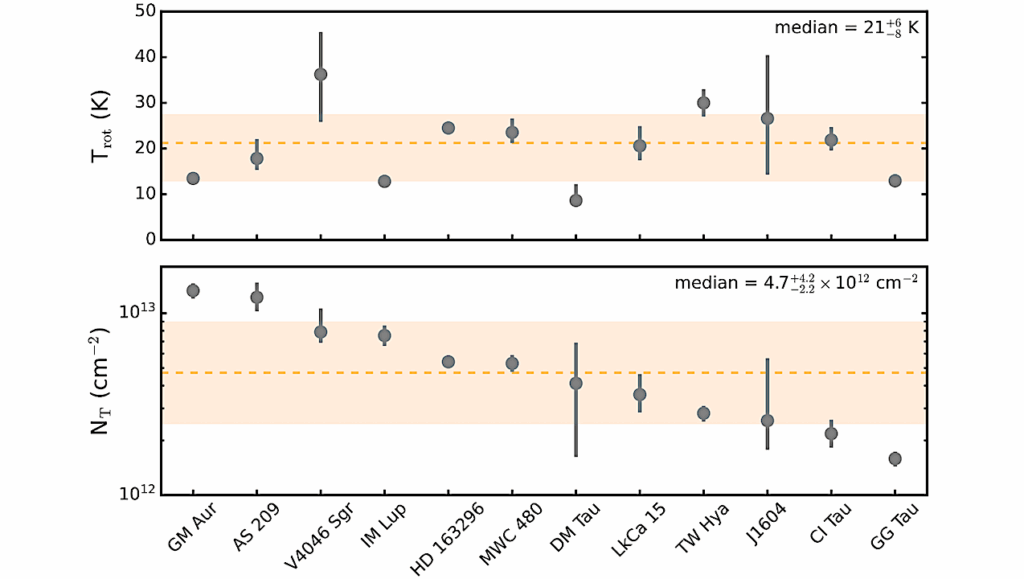Discovery Of CH3CHCO In Taurus Molecular Cloud (TMC-1) With The QUIJOTE Line Survey

We report the detection of methyl ketene towards TMC-1 with the QUIJOTE line survey. Nineteen rotational transitions with rotational quantum numbers ranging from J = 3 up to J = 5 and Ka =< 2 were identified in the frequency range 32.0-50.4 GHz, 11 of which arise above the 3{\sigma} level.
We derived a column density for CH3CHCO of N=1.5×10^11 cm-2 and a rotational temperature of 9 K. Hence, the abundance ratio between ketene and methyl ketene, CH2CO/CH3CHCO, is 93. This species is the second C3H4O isomer detected. The other, trans-propenal (CH2CHCHO), corresponds to the most stable isomer and has a column density of N=(2.2+-0.3)x10^11 cm-2, which results in an abundance ratio CH2CHCHO/CH3CHCO of 1.5.
The next non-detected isomer with the lowest energy is cis-propenal, which is therefore a good candidate for future discovery. We have carried out an in-depth study of the possible gas-phase chemical reactions involving methyl ketene to explain the abundance detected, achieving good agreement between chemical models and observations.
R. Fuentetaja, C .Bermúdez, C. Cabezas, M. Agúndez, B. Tercero, N. Marcelino, J. R. Pardo, L. Margulès, R. A. Motiyenko, J. -C. Guillemin, P. de Vicente, J. Cernicharo
Subjects: Astrophysics of Galaxies (astro-ph.GA)
Cite as: arXiv:2302.08825 [astro-ph.GA] (or arXiv:2302.08825v1 [astro-ph.GA] for this version)
https://doi.org/10.48550/arXiv.2302.08825
Focus to learn more
Submission history
From: Raúl Fuentetaja
[v1] Fri, 17 Feb 2023 11:47:33 UTC (145 KB)
https://arxiv.org/abs/2302.08825
Astrobiology, Astrochemistry








